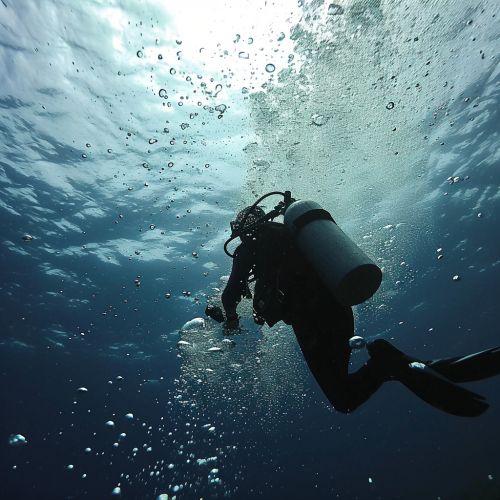Decompression Sickness
Overview
Decompression sickness (DCS) is a condition arising from dissolved gases coming out of solution into bubbles inside the body due to depressurization. DCS can occur during ascent from underwater diving, high altitude, or uncontrolled decompression following pressure exposure. The condition, also known as Caisson disease, the bends, or diver's disease, is a potentially severe medical condition that can cause pain, paralysis, and even death.
Causes
Decompression sickness is caused by a rapid decrease in the pressure that surrounds you, of either air or water. It can occur during uncontrolled decompression, high-altitude or deep-sea diving. The primary cause of decompression sickness is the formation of gas bubbles in the tissues and blood of the body. This can occur when a person is exposed to a decrease in pressure, such as when a diver ascends too quickly from a deep dive.
Pathophysiology
The pathophysiology of decompression sickness is complex and not fully understood. It is known that the condition results from the formation of gas bubbles in the body's tissues and blood. These bubbles can cause mechanical and biochemical effects, leading to damage and symptoms of decompression sickness. The type and severity of symptoms depend on the size, number, and location of the bubbles.
Symptoms
The symptoms of decompression sickness can vary widely and can occur anywhere from immediately after surfacing to several hours after a dive. Common symptoms include joint and muscle pain, dizziness, headache, fatigue, breathlessness, and skin rash. More severe symptoms can include chest pain, paralysis, unconsciousness, and death.
Diagnosis
Diagnosis of decompression sickness is primarily based on symptoms and the patient's diving history. There are no definitive tests for decompression sickness, but certain investigations such as a chest x-ray, CT scan, or MRI may be used to rule out other conditions. A high index of suspicion is necessary for diagnosis, especially in divers presenting with non-specific symptoms after a dive.
Treatment
The primary treatment for decompression sickness is recompression therapy, which involves breathing pure oxygen in a pressurized chamber. This helps to reduce the size of the gas bubbles in the body, allowing them to be reabsorbed into the bloodstream. Other treatments may include intravenous fluids, pain relief, and treatments for associated conditions such as lung or brain injuries.
Prevention
Prevention of decompression sickness involves careful planning and control of diving activities. This includes avoiding rapid ascents, ensuring adequate surface intervals between dives, and adhering to safe diving practices. The use of dive computers and decompression tables can also help to reduce the risk of decompression sickness.
Research
Research into decompression sickness is ongoing, with studies focusing on improving understanding of the condition's pathophysiology, developing new diagnostic tools, and optimizing treatment strategies. Current research areas include the role of individual susceptibility, the effects of different gas mixtures, and the use of drugs to prevent bubble formation.
See Also


References
1. Vann RD, Butler FK, Mitchell SJ, Moon RE. Decompression illness. Lancet. 2011;377(9760):153–64. 2. Pollock NW, Buteau D. Updates in decompression illness. Emerg Med Clin North Am. 2017;35(2):301–319. 3. Blogg SL, Gennser M, Møllerløkken A, Brubakk AO. Ultrasound detection of vascular decompression bubbles: the influence of new technology and considerations on bubble load. Diving Hyperb Med. 2014;44(1):35–44. 4. Madden D, Ljubkovic M, Dujic Z. Exercise pre-dive reduces bubble formation in scuba divers. Eur J Appl Physiol. 2013;113(3):597–606. 5. Mitchell SJ, Doolette DJ. Selective vulnerability to decompression sickness in the spinal cord: a review. Diving Hyperb Med. 2009;39(2):83–91.
